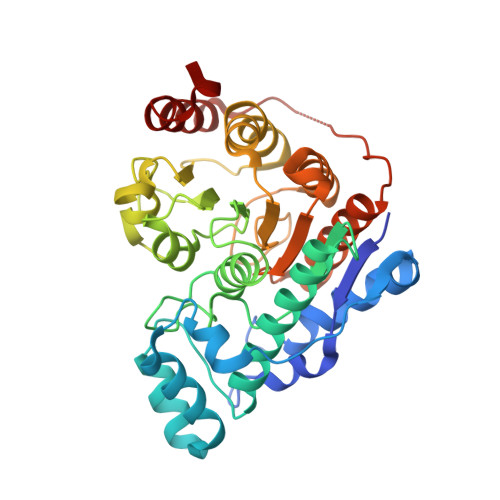Unique Molecular Interaction with the Histone Deacetylase 6 Catalytic Tunnel: Crystallographic and Biological Characterization of a Model Chemotype.
Olaoye, O.O., Watson, P.R., Nawar, N., Geletu, M., Sedighi, A., Bukhari, S., Raouf, Y.S., Manaswiyoungkul, P., Erdogan, F., Abdeldayem, A., Cabral, A.D., Hassan, M.M., Toutah, K., Shouksmith, A.E., Gawel, J.M., Israelian, J., Radu, T.B., Kachhiyapatel, N., de Araujo, E.D., Christianson, D.W., Gunning, P.T.(2021) J Med Chem 64: 2691-2704
- PubMed: 33576627
- DOI: https://doi.org/10.1021/acs.jmedchem.0c01922
- Primary Citation of Related Structures:
7JOM - PubMed Abstract:
Histone deacetylase 6 (HDAC6) is involved in multiple regulatory processes, ranging from cellular stress to intracellular transport. Inhibition of aberrant HDAC6 activity in several cancers and neurological diseases has been shown to be efficacious in both preclinical and clinical studies. While selective HDAC6 targeting has been pursued as an alternative to pan-HDAC drugs, identifying truly selective molecular templates has not been trivial. Herein, we report a structure-activity relationship study yielding TO-317 , which potently binds HDAC6 catalytic domain 2 ( K i = 0.7 nM) and inhibits the enzyme function (IC 50 = 2 nM). TO-317 exhibits 158-fold selectivity for HDAC6 over other HDAC isozymes by binding the catalytic Zn 2+ and, uniquely, making a never seen before direct hydrogen bond with the Zn 2+ coordinating residue, His614. This novel structural motif targeting the second-sphere His614 interaction, observed in a 1.84 Å resolution crystal structure with dr HDAC6 from zebrafish, can provide new pharmacophores for identifying enthalpically driven, high-affinity, HDAC6-selective inhibitors.
- Department of Chemical and Physical Sciences, University of Toronto Mississauga, 3359 Mississauga Rd N., Mississauga, Ontario L5L 1C6, Canada.
Organizational Affiliation:





















